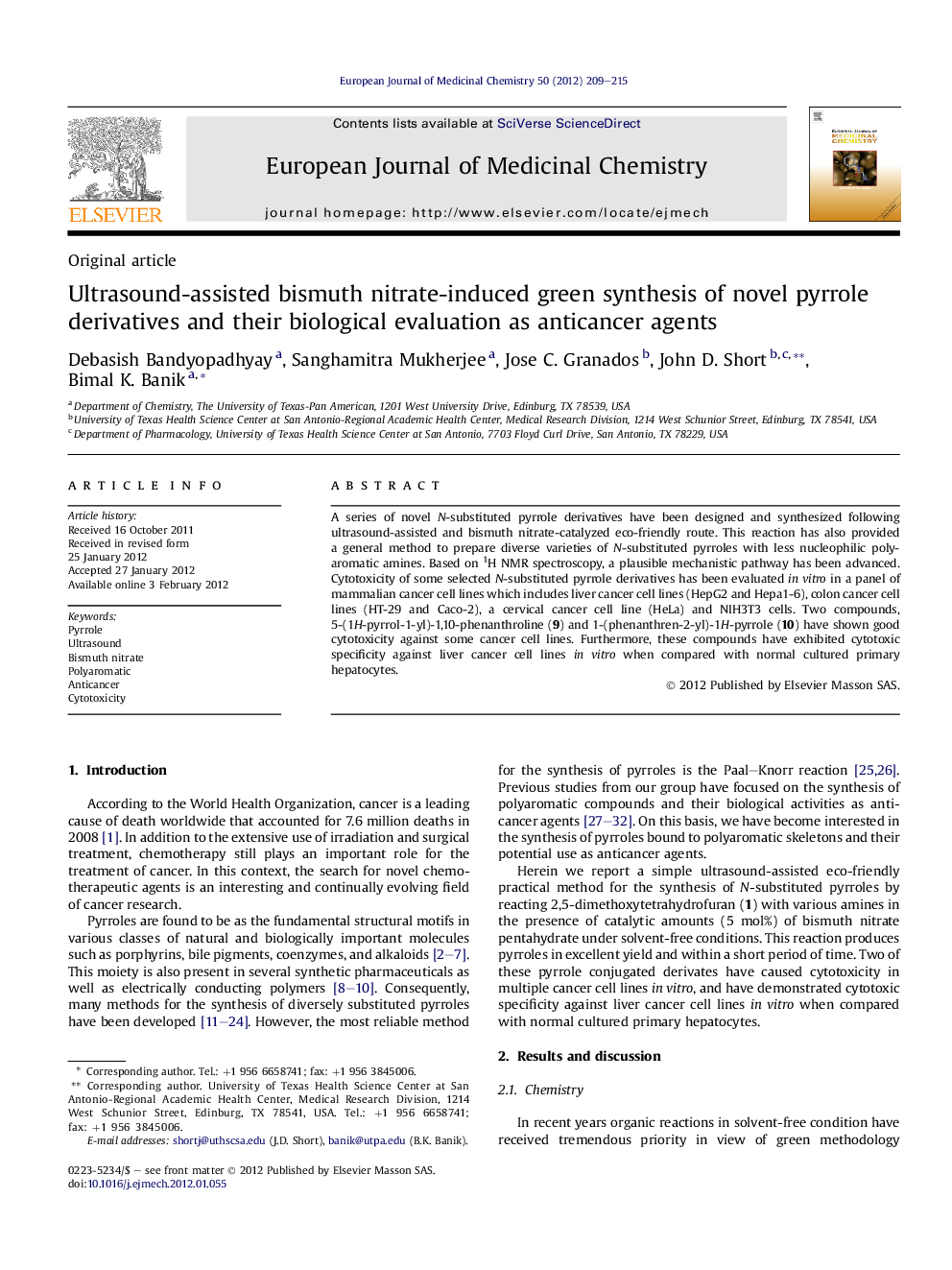| Article ID | Journal | Published Year | Pages | File Type |
|---|---|---|---|---|
| 1394510 | European Journal of Medicinal Chemistry | 2012 | 7 Pages |
A series of novel N-substituted pyrrole derivatives have been designed and synthesized following ultrasound-assisted and bismuth nitrate-catalyzed eco-friendly route. This reaction has also provided a general method to prepare diverse varieties of N-substituted pyrroles with less nucleophilic polyaromatic amines. Based on 1H NMR spectroscopy, a plausible mechanistic pathway has been advanced. Cytotoxicity of some selected N-substituted pyrrole derivatives has been evaluated in vitro in a panel of mammalian cancer cell lines which includes liver cancer cell lines (HepG2 and Hepa1-6), colon cancer cell lines (HT-29 and Caco-2), a cervical cancer cell line (HeLa) and NIH3T3 cells. Two compounds, 5-(1H-pyrrol-1-yl)-1,10-phenanthroline (9) and 1-(phenanthren-2-yl)-1H-pyrrole (10) have shown good cytotoxicity against some cancer cell lines. Furthermore, these compounds have exhibited cytotoxic specificity against liver cancer cell lines in vitro when compared with normal cultured primary hepatocytes.
Graphical abstractAn expedient green synthesis of novel N-substituted pyrrole derivatives by reacting 2,5-dimethoxy tetrahydrofuran with diverse amines is reported. A variety of pyrrole derivatives has been synthesized and in vitro cytotoxicity is evaluated for some selected compounds in a panel of cancer cell lines.Figure optionsDownload full-size imageDownload as PowerPoint slideHighlights► A series of novel N-substituted pyrrole derivatives (1–10) were synthesized. ► Sonochemical solventless pathway was followed using Bi(NO3)3·5H2O as catalyst. ► The in vitro cytotoxicity for (6–10) has been investigated against cancer cell lines. ► Compounds 9 and 10 exhibited antitumor activity in vitro, but not via apoptosis. ► Compounds 9 and 10 were not cytotoxic for normal primary hepatocytes in vitro.
